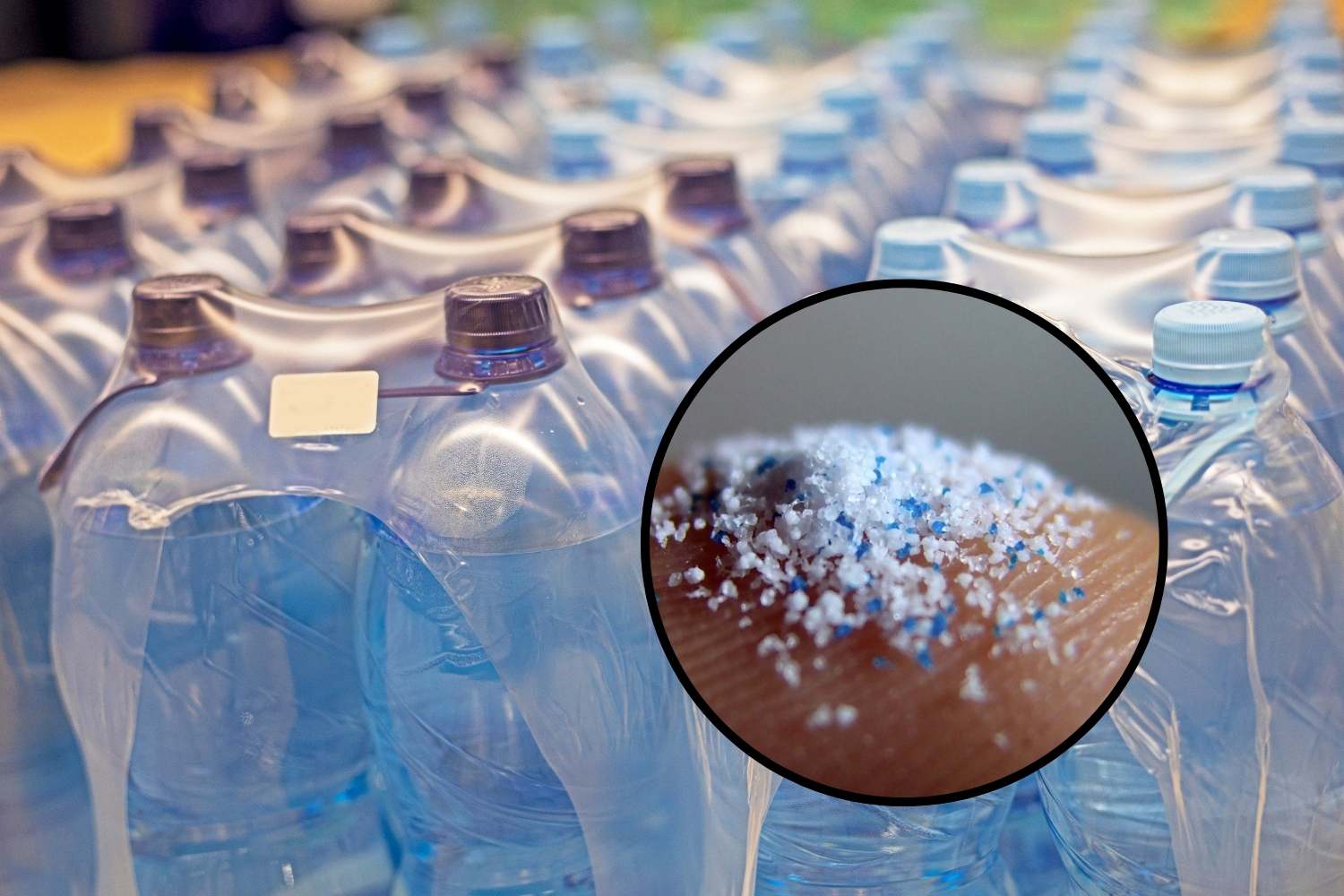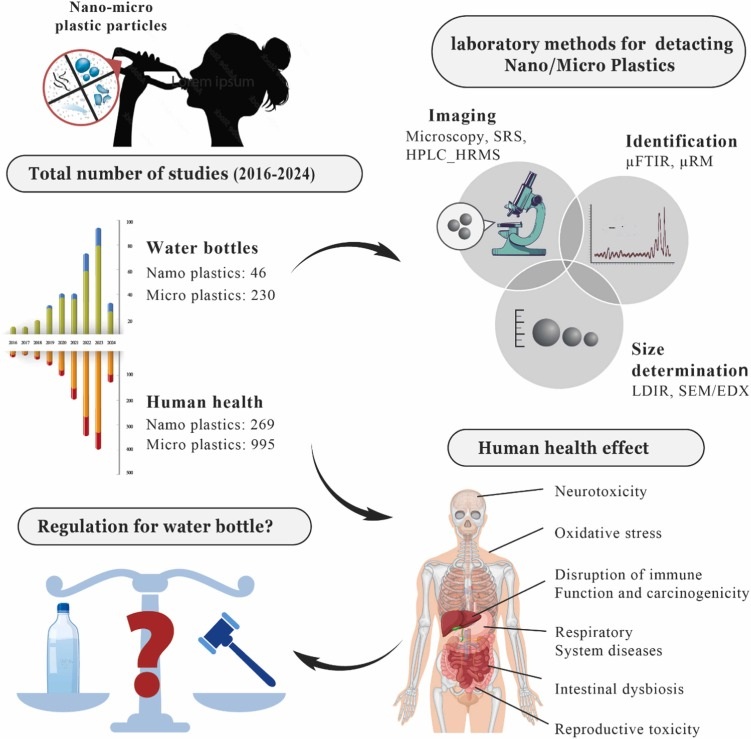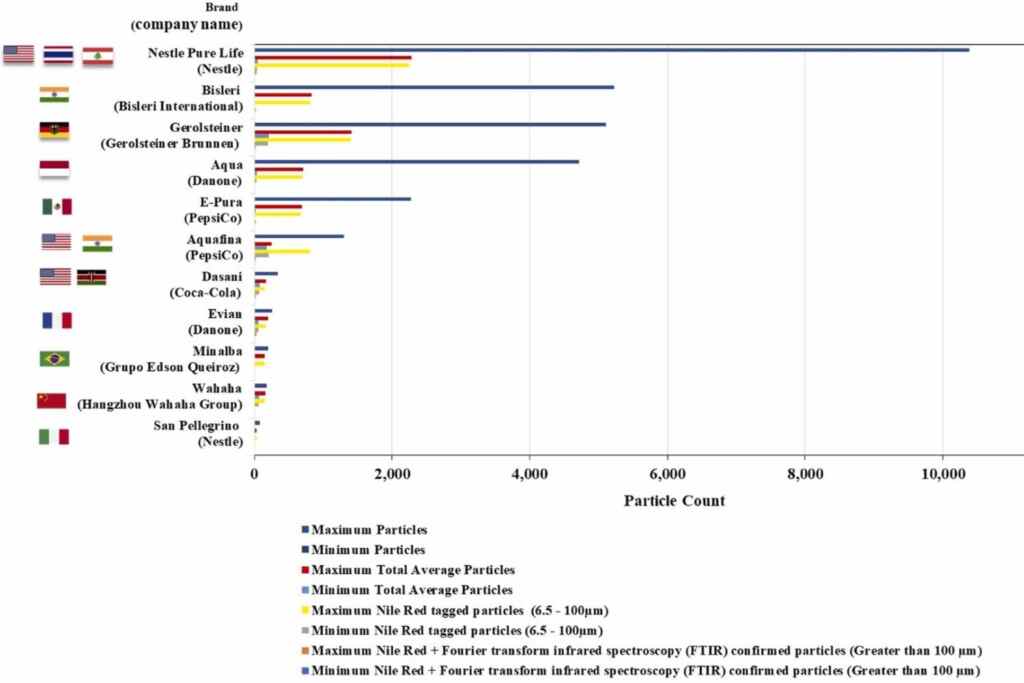New research reveals that bottled water can expose consumers to up to 90,000 more microplastic particles per year than tap water, raising significant health and environmental concerns.

Table of contents
Microplastics are tiny plastic fragments that have invaded our environment in recent decades. From the air we breathe to the food we consume, and even the water we drink, these particles are everywhere. However, recent research reveals that some everyday choices can significantly increase our exposure to these particles.
One of the most surprising findings concerns bottled mineral water, often thought to be safer than tap water. According to a review conducted by researchers at Concordia University in Montreal, published in the Journal of Hazardous Materials, bottled water consumers are ingesting significantly higher amounts of microplastics. The study concluded that a regular bottled water drinker could ingest up to 90,000 more plastic particles per year compared to someone who drinks tap water.
The study
This research was based on a critical review of around 140 studies published between 2016 and 2024, focusing particularly on 16 studies that examined microplastic contamination in single-use plastic bottles. The review had two main goals: to assess the true scale of the problem and highlight methodological gaps in existing studies, underscoring the need for standardized protocols to more accurately assess health risks.
The studies analyzed water samples from 8 to 280 bottles at a time, sourced from 16 countries, including Italy, France, Germany, the United States, India, Brazil, and China. Different types of water were tested: natural mineral water, purified, distilled, spring water, and even desalinated water.
A clear pattern emerged: plastic bottles are far from neutral containers, a fact that had long been suspected. Factors such as friction, exposure to sunlight, repeated opening and closing, compression, and even the cap (especially if made from high-density polyethylene) contribute to the release of micro and nanoplastics into the water.
On average, those who drink only tap water ingest between 39,000 and 52,000 microplastic particles per year. In contrast, regular bottled water drinkers can consume up to 90,000 additional plastic particles annually. Considering prolonged consumption over decades, the cumulative effect in the body becomes both significant and concerning.

@Journal of Hazardous Materials
The most (and least) contaminated bottled waters
An interesting finding from the study is the variance in microplastic contamination across different bottled waters. Not all tested bottles were the same, and some brands had much higher concentrations of microplastics:
- Nestlé Pure Life: over 10,000 particles per liter (3.4 particles per ounce)
- Bisleri (India): about 6,000 particles per liter (2.0 particles per ounce)
- San Pellegrino (Italy, Nestlé group): significantly fewer particles than other brands from the same group, thanks to better production processes and packaging
- Other major global brands (Danone, PepsiCo, Coca-Cola): varying levels depending on the batch and packaging type
As observed, even within the same Nestlé group, there are considerable differences. San Pellegrino, produced in Italy, contains far fewer particles, demonstrating how packaging and production processes can significantly affect contamination levels.

@Journal of Hazardous Materials
The potential health risks
The ingestion of micro and nanoplastics can have serious consequences for health. Scientific studies link them to respiratory disorders, reproductive problems, neurotoxicity, chronic inflammation, changes in gut microbiota, and even an increased risk of cancer. Nanoplastics, due to their incredibly small size, can penetrate red blood cells, lymph nodes, and various tissues, accumulating over time and posing a greater threat than larger particles.
Another critical point raised by the review is the lack of common methods for analyzing microplastics. The techniques used by laboratories vary significantly, making it difficult to compare data. The authors emphasize the urgency of standardized protocols and large-scale studies to obtain more reliable and accurate information.
Important changes are needed
From a regulatory perspective, the study highlights the need for clear contamination limits, reducing the use of single-use plastics, and selecting safer materials for bottles.
Considering all this, and without forgetting the environmental concerns, it’s always better to choose tap water.
